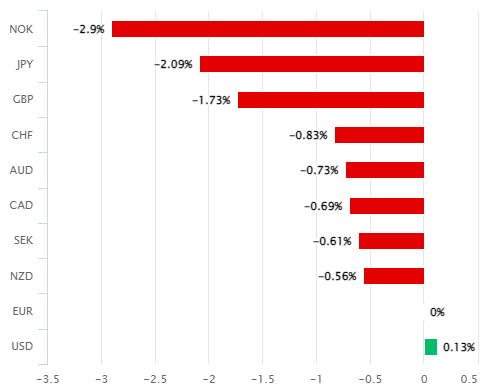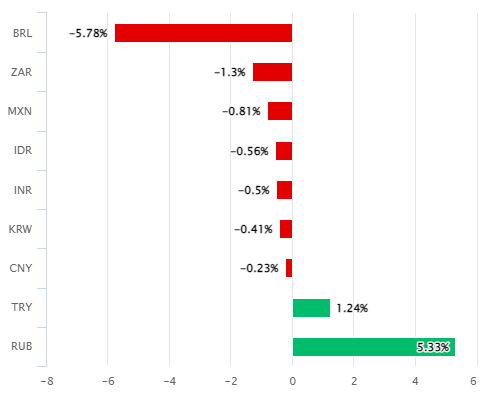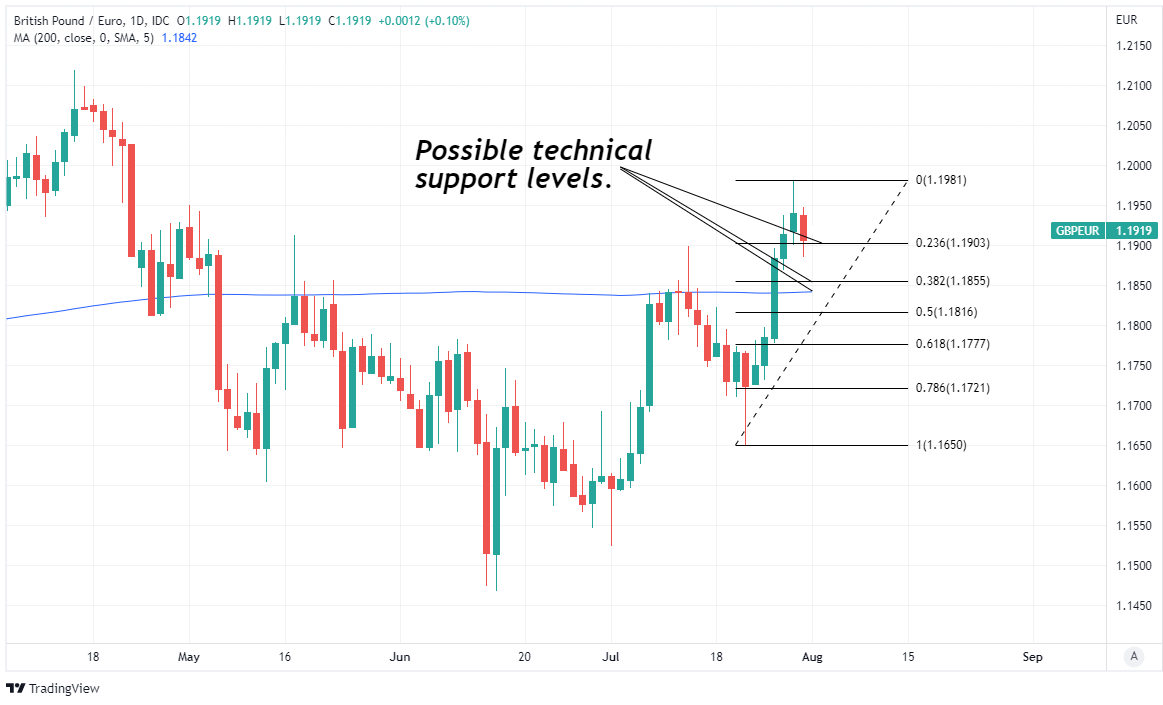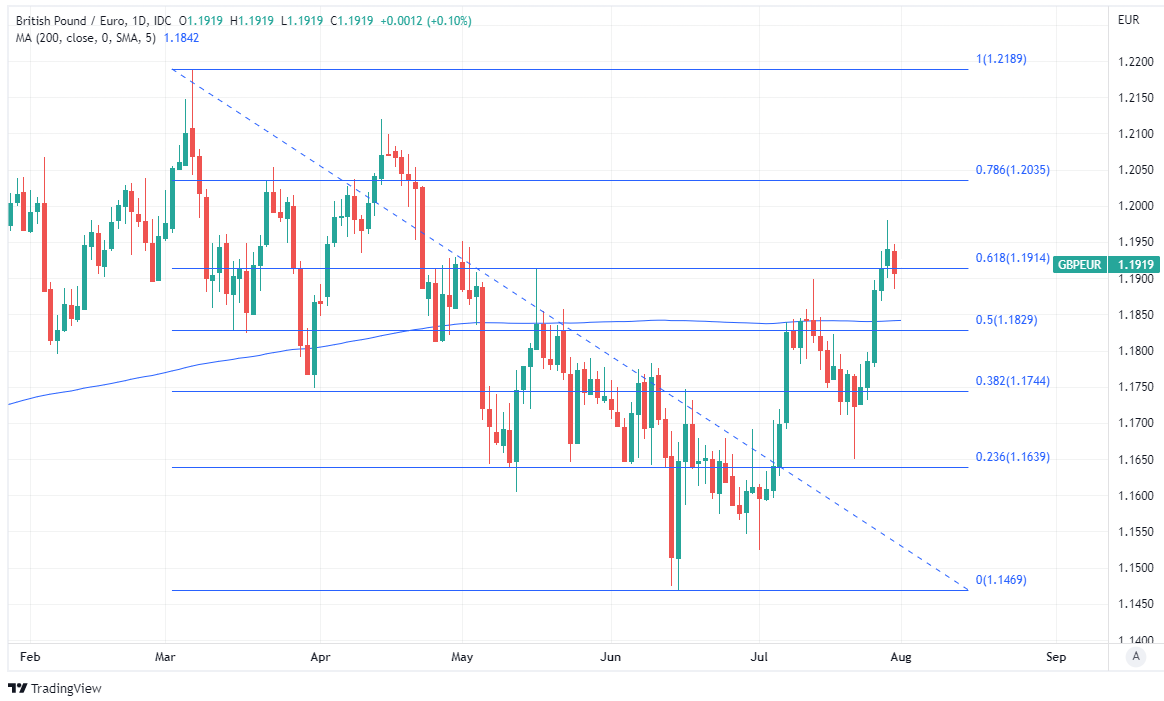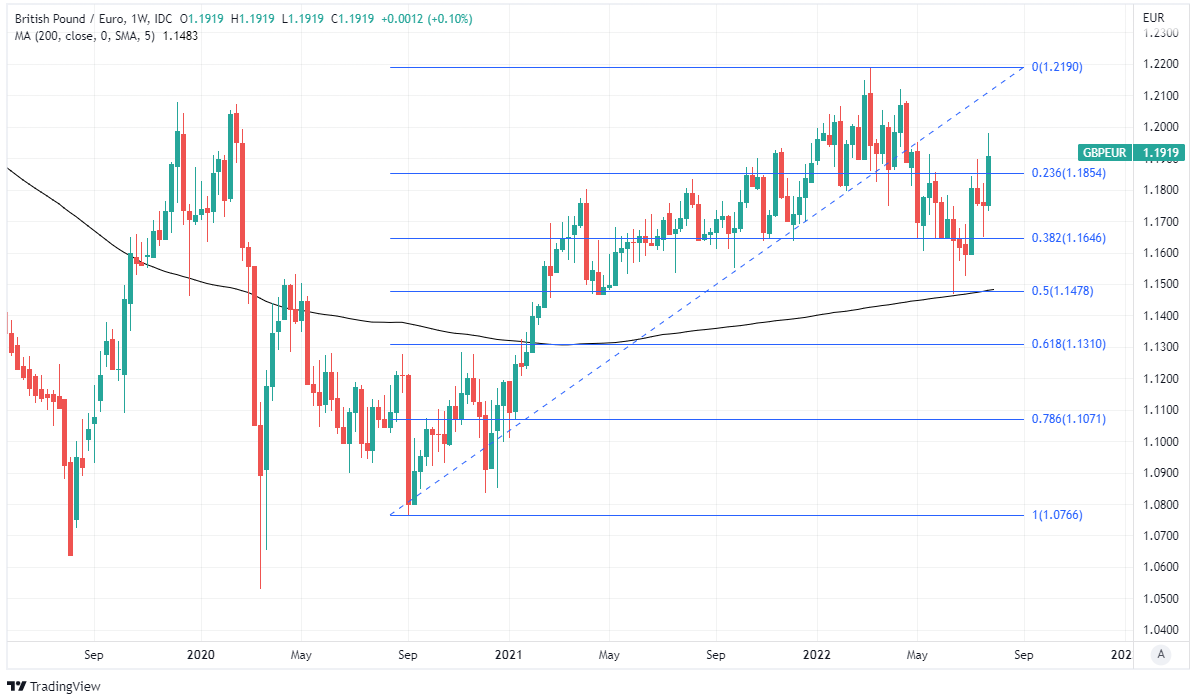GBP/EUR Rate Week Ahead Forecast: May Struggle as BoE Bank Rate Risk Looms
- Written by: James Skinner
- GBP/EUR at 3-month highs ahead of BoE decision
- Uncertainty may weigh on GBP/EUR into Thursday
- 50/50 odds for 0.25% or 0.50% uplift in Bank Rate
- Smaller increase could mean a setback for Sterling
- Technical supports around 1.1903, 1.1855, 1.1842
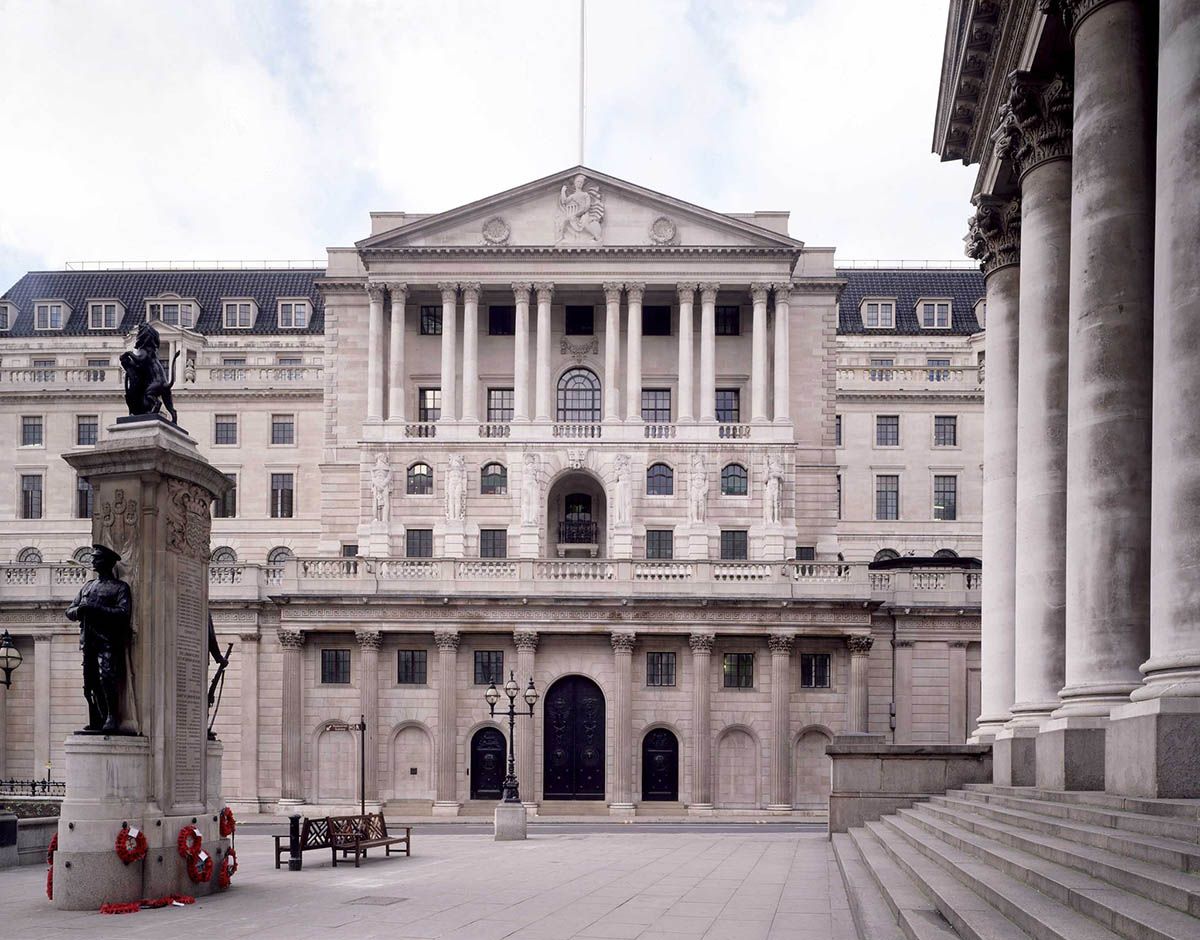
© Bank of England
The Pound to Euro exchange rate rallied further to reach three month highs last week with the aid of a handicapped single currency but could struggle to advance further in the days ahead owing to uncertainty about the outcome of Thursday’s Bank of England (BoE) interest rate decision.
Sterling benefited greatly last week when the Euro came under pressure across the board amid an intense market focus on European gas supplies, which are drawn mainly from Russia and are being restricted by Moscow in protest over sanctions relating to its invasion of Ukraine.
“A complete shutdown of gas supply from Russia to the EU is now looking much more likely, and something that is unequivocally being priced into European assets,” says Francesco Pesole, an FX strategist at ING.
Reduced supplies have pushed prices higher and led the European Union to agree to a rationing plan that could further hamper continental economies over the winter, leading to widespread declines for the single currency and a handicap that persisted throughout last week.
Above: Euro relative to G20 currencies last week. Click each image for closer inspection. Source: Pound Sterling Live.
Compare Currency Exchange Rates
Find out how much you could save on your international transfer
Estimated saving compared to high street banks:
£25.00
Free • No obligation • Takes 2 minutes
This lifted GBP/EUR from 1.1783 to 1.19 on Tuesday and handicapped the single currency, ultimately enabling Sterling to rise further and close to 1.20 when the Pound and other currencies benefited from the correction that pulled the U.S. Dollar lower throughout the rest of the week.
“The drop in EUR/GBP has been almost entirely driven by the EUR leg and global risk sentiment (to which the pound is more sensitive than the euro),” Pesole and colleagues said in a market commentary last week.
Europe’s single currency staged a partial rebound on Friday following stronger than expected outcomes for Euro Area GDP and inflation in the second quarter and July respectively, which may mean that Sterling struggles to advance further against the Euro ahead of Thursday’s BoE decision.
“Our primary theme for Sterling has long been Euro area/US growth and rate expectations catching down to UK/BoE levels. While the UK outlook is challenging, it looks better priced on a relative basis and this is what matters,” says Paul Robson, European head of G10 FX strategy at Natwest Markets.
Above: Pound to Euro rate shown at daily intervals with 200-day moving-average and Fibonacci retracements of mid-July rally indicating possible areas of short-term technical support for Sterling. Click image for closer inspection.
“We retain our long held view that EUR/GBP risks are heavily skewed to the downside [GBP/EUR to the upside] and GBP/USD is forming a base ~1.20. The short-term risk to this view is a consensus-disappointing 25bp BoE rate hike next week – which is actually our central expectation,” Robson said on Friday.
Whether or not the Pound to Euro rate is able to sustain itself near current levels this week and in those that come after likely depends in large part on what the BoE elects to do with Bank Rate this Thursday, given what is implied by overnight index swap contracts.
Those contract rates implied on Friday that Bank Rate is likely to rise to 1.63% this week, which is above the 1.5% that would prevail if the BoE lifts the benchmark by 25 basis points but below the 1.75% that would stand if the bank moves by a larger 50 basis points.
“Overall, we think the MPC is in a good place by having delivered an early and gradual tightening cycle so far. We believe in the merit of such a strategy and see the first signs of gradual slowing in economic activity,” say Fabrice Montagne and Abbas Khan, both economists at Barclays.
Above: Pound to Euro rate shown at daily intervals with Fibonacci retracements of early March correction indicating possible areas of technical resistance for Sterling. Includes 200-day moving-average. Click image for closer inspection.
“Still, we believe the Bank will step up the pace of hiking with a 50bp rise in August (likely with a 7-2 vote, with Tenreyro and Cunliffe voting for 25bp), which would be its biggest hike since the 1994/95 tightening cycle,” Barclays' Montagne and Khan said in a Friday research briefing.
There is high uncertainty over which way Thursday’s decision will go and not least because it remains debatable whether the economic conditions necessary for a step change in favour of a larger 0.5% increase in Bank Rate have been satisfied by recent data coming out of the UK.
Governor Andrew Bailey and Chief Economist Huw Pill, among others, have recently suggested that Bank Rate could rise further and faster than earlier forecasts had implied would be likely if this year’s increases in energy costs lead other prices across the economy to also begin rising.
“Economic data released since the MPC’s last meeting, when it hiked by 25bp, do not make a strong case for a chunkier rate hike,” Samuel Tombs, chief UK economist at Pantheon Macroeconomics, said on Friday last week.
Above: Pound to Euro rate shown at weekly intervals with 200-week moving-average and Fibonacci retracements of September 2020 recovery. Click image for closer inspection.
Compare Currency Exchange Rates
Find out how much you could save on your international transfer
Estimated saving compared to high street banks:
£25.00
Free • No obligation • Takes 2 minutes

